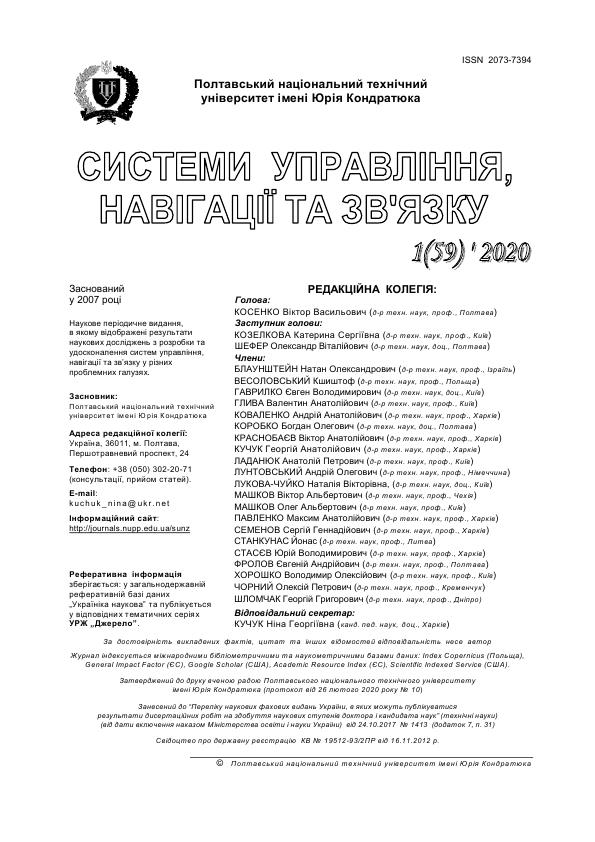ASSESSMENT OF THE NUMBER OF SECONDARY SOFTWARE DEFECTS BASED ON COMBINING THE PARAMETERS OF THE JELINSKI-MORANDA AND SHICK-WOLVERTON SOFTWARE RELIABILITY GROWTH MODELS
DOI:
https://doi.org/10.26906/SUNZ.2020.1.097Keywords:
software reliability, defect, secondary defect, Software Reliability Growth Models, modified JelinskiMoranda reliability growth model, modified Shick-Wolverton reliability growth model, model aggregation, combined JelinskiMoranda and Shick-Wolverton modelAbstract
Software Reliability Growth Models (SRGM) have been investigated to identify those that can be used to account for the factor of manifestation of secondary defects. The secondary defects are those that are introduced into the software after the removal of the primary ones, which are introduced and eliminated during software debugging and testing. The assumptions and analytical expressions of the Jelinski-Moranda, Schick-Wolverton SRGM on the question of their application for the consideration of the secondary defects of software design are analyzed. An approach is proposed to quantify the secondary defects, which is to modify the risk functions of the SRGM. The problematic issues arising from the complexisation of the modified simple exponential model and the Jelinski-Moranda model are analyzed. Approaches in which the modification of SRGM is possible - consistency of assumptions, acceptance of additional assumptions that agree on models, comparison of parameters regarding the conditions of implementation of analytical transformations are considered. The advantages of combining Jelinski-Moranda and Schick-Wolverton SRGM compared to combining a modified Jelinski-Moranda model and a modified simple exponential model are presented. The resulting formula, in conjunction with SRGM other classification features, allows to predict the value of the risk function and further use it to comprehensively evaluate the reliability and functional safety of complex systems, including systems that can be attributed to the class of critical (eg, Instrumentation and Control Systems for Nuclear Power Plants)Downloads
References
Гордеев А. А. Эволюция моделей качества программного обеспечения: методика и результаты анализа в контексте стандарта ISO 25010 / А.А. Гордеев, В.С. Харченко // Системы обработки информации. – 2013. – No6(113), C. 15-34.
International standard ISO/IEC FDIS 25010. System and software quality models. – 2010, 34 p.
Jelinski Z. Software reliability research / Z. Jelinski, P. Moranda // Statistical computer performance evaluation W.Freiberger, Ed. Academic Press. – 1972. – Р. 465-484.
Shick G.J. An analysis of computing software reliability models / G.J. Shick, R.W. Wolverton // IEEE Tras. Software Eng. – V. SE–4. – No 2. – 1978. – P. 104-120.
Полонников Р.И. Методы оценки показателей надежности программного обеспечения / Р.И. Полонников, А.В. Никандров. – СПб.: Политехника – 1992. – 78 с.
Одарущенко О. Н. Учет вторичных дефектов в моделях надежности программных средств / О. Н. Одарущенко, А.А. Руденко, В.С. Харченко // Математичні машини і системи. – Київ: ІПММС НАН України, 2010. – No 1. – С. 205-217.
Анализ сценариев и определение параметров для оценки надежности программных средств с учетом вторичных дефектов / В.С.Харченко, О. Н. Одарущенко, А. А. Руденко, Е. Б. Одарущенко // Системи управління, навігації та зв’язку. – Київ, 2011. – Випуск 2 (18). – С.273-280.
Харченко В. С. Учет фактора вторичных дефектов при оценке надежности программных средств / В.С.Харченко, А. А. Руденко, О.Н.Одарущенко, Е. Б. Одарущенко // Научные ведомости Белгородского государственного университета. История. Политология. Экономика. Информатика. – Белгород, 2013. – No 22 (165). Выпуск 28/1. – С. 153-160.
Одарущенко О.Н. Метод оценивания надежности программных средств с учетом вторичных дефектов / О.Н. Одарущенко, А.А. Руденко, В.С. Харченко // Радіоелектронні і комп’ютерні системи. – 2012. – No 7 (59). – С. 294-300.
Холстед М.Х. Начало науки о программах / М. Х. Холстед – М.: Финансы и статистика, 1981. – 128 с.




